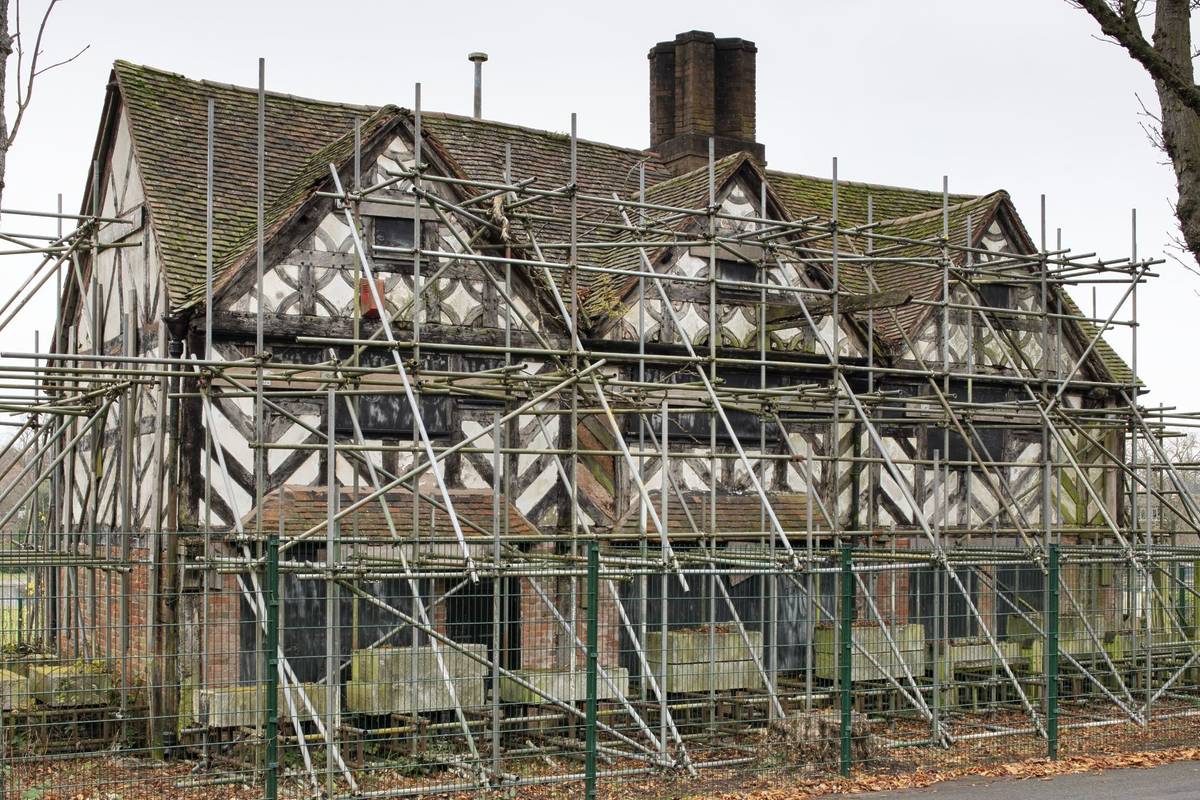Credit: Historic England
The fight to save the Golden Lion isn’t just years old. It’s been going on for over a century now. The Grade II, timber-framed pub, originally called The Star, was built in the 17th century on Deritend High Street in Digbeth. When threatened by demolition in 1911, it was dismantled and rebuilt in Cannon Hill Park.
After that, it was used as a cricket pavilion, but the Golden Lion has stood empty, left to rot and kept up by scaffolding, for more than 20 years. But many, the Birmingham Conservation Trust included, haven’t given up hope on one of the city’s oldest buildings—with a long-term aim to bring it back into community use.
Historic England awarded a grant of £32,000 to look into the condition of the abandoned building in 2023. Today (Thursday, August 7), it’s one of 37 historic buildings and sites across England to be saved through £15 million in repair grants. It will receive £344,265 to “complete the repair of the structure of the building.”

The Heritage at Risk Capital Fund, led by Historic England and funded by the Department for Culture, Media and Sport, will rescue listed buildings and sites facing dereliction or demolition. Projects range from Victorian market halls to medieval churches, creating new jobs and community spaces.
The timber-framed Bromwich Hall—one of only three Grade I Listed buildings in Sandwell, and one of the oldest buildings in the area—is among those also receiving money (£200,000). Currently run as a museum, the building will receive urgent conservation and repair work, including the roof, drainage, timber frame and panels.
Other historic Midlands sites include Burslem Indoor Market (£1,000,000) and Bethesda Methodist Chapel (£521,737) in Stoke on Trent; Spilsby Sessions House (£1,006,000) in Lincolnshire; Worksop Priory Gatehouse (£178,147) in Nottinghamshire; St Mary Magdalene (£151,163) in Newark-on-Trent; and Corporation Bridge (£495,000) and Unseen Arts (£437,741) in Grimsby.

